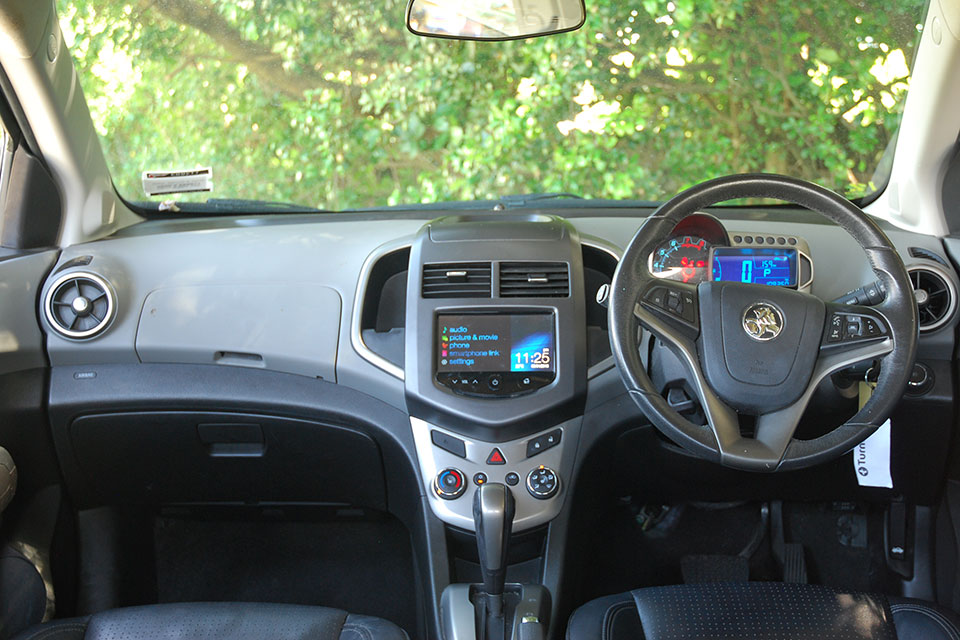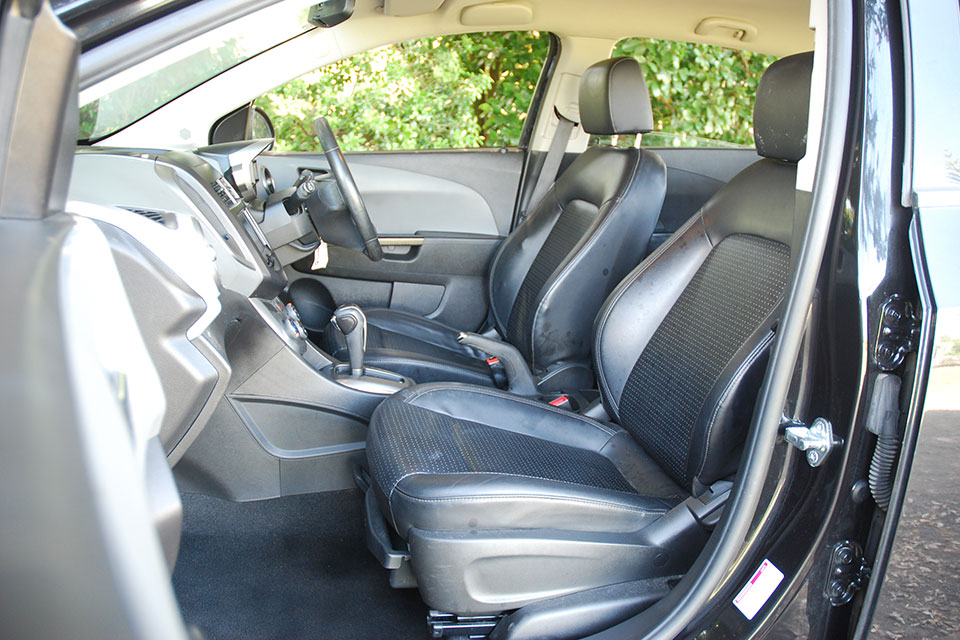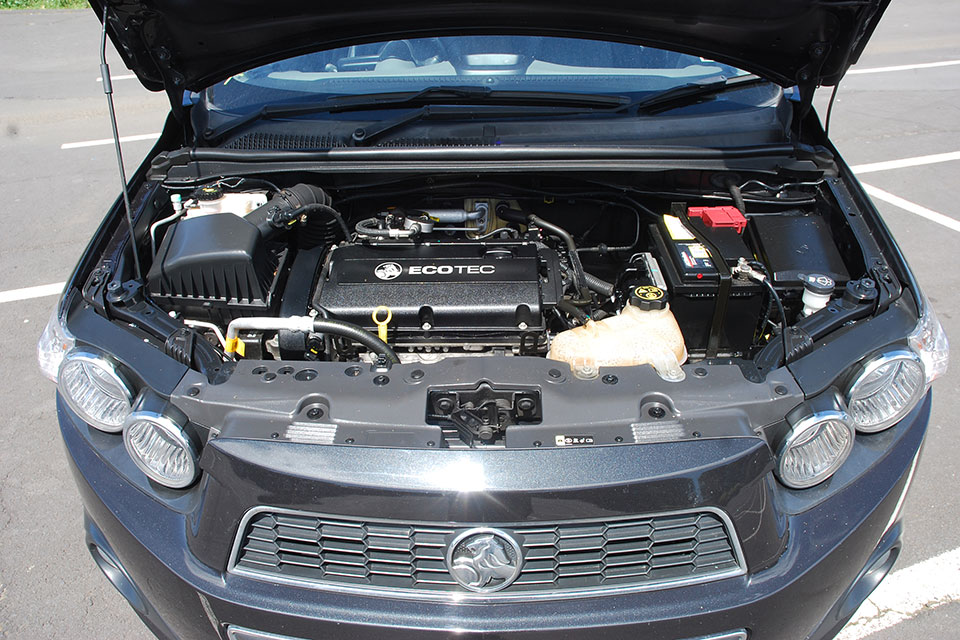Holden Barina 2011-2016 used car review
For its price, the Holden Barina offers a lot of features and is reasonable to drive.

For its price, the Holden Barina offers a lot of features and is reasonable to drive. Its reputation for quality is poor.
The Holden Barina was developed in Korea with input from around the world, including by engineers in Australia. New Zealand buyers initially had the choice of two models - a sporty RS version and a sedan were also available. A separate “Barina Spark” model was also launched though it was largely a different vehicle, merely sharing the name for marketing purposes. A tiny number of these cars, called the Chevrolet Sonic, have come in as used imports from Japan.
Inside and out
The Barina has a sporty look for a small car, with a forward-sloping, wedge-like shape. At the front is a deep Holden family grille, flanked by two separate round headlights. The wing mirrors are slim and rounded and the side windows angle upwards towards the rear of the car - which makes the rear passenger seat quite small. The back door handle is set vertically in the rear window trim and can be awkward to open, particularly for small children. The rear door features separate light pods like those at the front and a little spoiler. This car would suit a small family.
The Barina is targeted at young buyers in most overseas countries, so the dashboard and instruments are designed in a way the company thought would appeal to them. There is no traditional cluster. Instead, there is a motorcycle-style pod with a rev counter and separate digital speedometer, fuel gauge and transmission gear indicator. This moves up and down with the steering wheel adjustment. On either side of the centre console are two tall storage areas that can handle a smartphone.
The CDX model gets a touch-screen infotainment system which, when connected to a phone or USB, can play music, pictures or even movies. You can also have satellite navigation through the screen, a unique feature for a small vehicle of the time. It was not built into the car - you download the “BringGo” app to your phone and when you plug in the maps can be used on the screen. It’s similar to how Apple CarPlay works in new vehicles.
We were impressed with the seats in the Barina - the front seats are deep and very comfortable, and offer plenty of support. They feature a faux-leather trim for a premium look. The rear seat is also comfortable, although space is a little tight, particularly for legs. It’s only wide enough for two adults to be comfortable.
For a small car, the Barina has an impressive boot with 290 litres of space available. That expands to 653 litres when the rear seat is folded down. The sedan version has a massive boot with an additional 200 litres of storage, nearly the size of a large car.
On the road
Initially, one engine was available in the Barina, a 1.6-litre four-cylinder petrol engine. The later RS version uses a 1.4-litre four-cylinder petrol unit. Our review car uses the 1.6, which produces 85kW and 155Nm. Performance is acceptable, although the engine needs to be pushed quite hard and can be raucous in the process.
The six-speed automatic is impressive for a small car but it could be smarter with its shifts. You can choose these yourself through a button on the side of the stick. A five-speed manual is an option.
The Barina feels a little sportier to drive than most other small hatchbacks, with a flat and slightly firm ride - though not to the point of being uncomfortable. The steering is light and reasonably responsive, and the brakes are acceptable. Engine and road noise is a little on the high side.
The CDX has standard reversing sensors and although a reversing camera would be nice, the sensors do a decent job of making the car easy to park. The entry-level CD model has neither and it would be useful to have them added when you buy the car. A 10.1-metre turning circle is also very helpful.
The Barina’s tow rating is normal to high for a small car. It can pull 500kg unbraked (a small garden trailer) and 1,100kg braked (a small trailer boat).
Safety
The Barina carries a full five-star ANCAP rating (2011-onwards), with good results for the frontal offset crash test and excellent results in a side impact. Safety equipment levels are high with front, side and curtain airbags standard, along with electronic stability control and electronic brake-force distribution.
All three rear seatbelts are the full shoulder-type, which offer more protection than a lap-only belt. ISOFIX child seat mounts can be found in the rear seat window positions.
Reliability
The motor vehicle trade indicates concerns over this generation Barina, backed up by a long list of recalls and service programmes initiated for the vehicle. Consider a vehicle check with a local Holden dealer to make sure these have been done. The Barina uses a cambelt, which will require replacement, though at a relatively high mileage of 160,000km. The RS model uses a timing chain, which doesn’t need replacement.
The ignition barrels in 2011-2014 cars were subject to recall and it’s important to check this has been repaired on any car you’re considering. The barrel can wear, allowing the car to start or turn off from just the weight of a key ring in the barrel. It’s a safety issue because, if the car is running, it could turn off the power steering and brakes.
It starts out as vibration and develops into a “flare” where engine revs rise during an up-shift. The next gears refuse to select and then there is a complete failure. Holden extended coverage for the transmission out to five years, though some cars are now older than this. Full replacement is the best option, which could cost more than $2,000.
Engine mounts are also prone to failure. That will show as a vibration in the drivetrain and can complicate the diagnosis of a transmission issue. They will leak fluid under the engine. The engine is also known to develop engine oil leaks.
Keep an eye on coolant levels and the temperature warning light because the thermostat housing is prone to cracks and a low level of coolant can cause the engine to overheat and, in the worst cases, fail.
Front suspension rod ends are known to fail particularly quickly. That causes a knock from the front suspension over bumps and in low-speed turns. Replacement costs only a few hundred dollars.
The plastics used inside the cabin are hard and pick up scratches very easily. They also react with some commercially available cleaning fluids and can look worse after cleaning than before.
Cost of ownership
Holden recommends you service this model every 12 months or at 15,000km, whichever comes first. We were given quotes of between $280 and $320, based on the mileage travelled. The cambelt will require replacement every 160,000km at the cost of up to $1,000.
Fuel use by the Barina is average to high for this kind of car. RightCar estimates that over 14,000km of driving a year, you will spend $1,790 on fuel. The 46-litre fuel tank will cost $92 to fill at $2 a litre and will potentially take you 600km before the fuel light comes on.
A vehicle licence for the Barina costs $76.92 a year, with the car in the cheapest ACC levy group.
Trade Me Insurance estimates insurance for a car valued at $11,280 will cost $45.45* per month. This is $1 less than a Mazda2.
Buyers’ guide
The Barina is available on Trade Me priced from $8,500 to $22,000. The most expensive vehicles are the turbocharged RS models.
Variants
- CD - Features alloy wheels, CD player steering wheel, electric windows, remote central locking and Bluetooth connectivity.
- CDX - Adds leather steering wheel, fog lights, touch-screen infotainment system, cruise control and reversing sensors.
- RS - Adds turbocharged engine, sports exhaust, sports suspension, alloy pedals, sports steering wheel and reversing camera.
Timeline
- 2011 Hatchback model launched
- 2012 Sedan model launched
- 2013 Performance RS model added to the range
- 2016 Replaced by a significantly updated version
Details
2013 Holden Barina hatch CDX
$9,000 to $15,000 for models which have travelled 70,000 to 120,000km
1.6-litre four-cylinder petrol, 85kW/155Nm (claimed)
Six-speed automatic, front-wheel drive
Five-star ANCAP rating
15,000km or 12 months
Full size spare (optional)
6.4-litres per 100km (claimed)
Regular
4039mm
1735mm
1516mm
500kg (unbraked), 1100kg (braked)
10.1m
This review covers the Holden Barina for model years 2011, 2012, 2013, 2014, 2015 and 2016.
Review vehicle supplied by Turners Cars.
*Our insurance estimates are based on a 35-year-old male with no accidents in the last two years, garaging the car in Mission Bay, Auckland. The car is not used for business and will cover 10,000km to 20,000km a year. We estimate with no option add-ons and $500 excess. Customise your estimate at Trade Me Insurance.
Image gallery
Also consider






